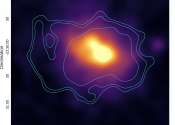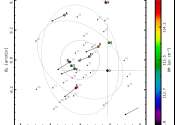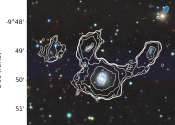Astronomers detect radio halo in a massive galaxy cluster
An international team of astronomers has performed radio observations of a massive galaxy cluster known as ACT-CL J0329.2-2330, which resulted in the detection of a new radio halo in this cluster. The finding was reported ...






